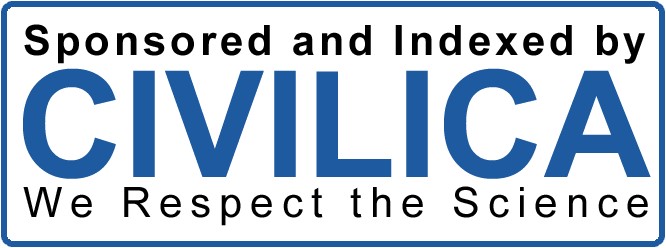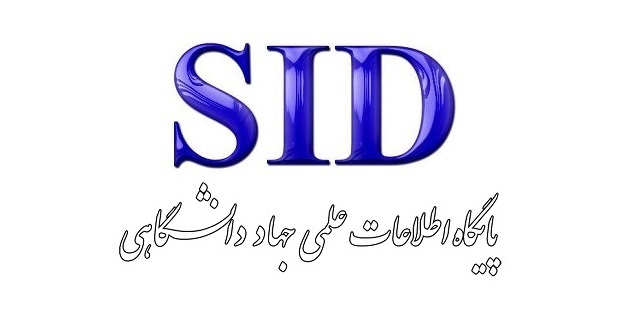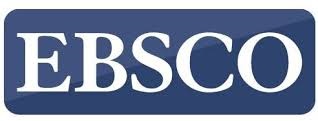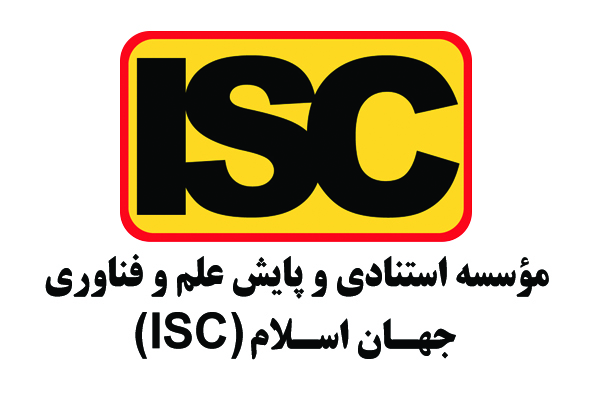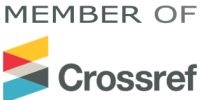طراحی مدل عوامل موثر بر قصد خرید مشتریان با تبیین نقش تبلیغات دهان به دهان الکترونیکی
کلمات کلیدی:
قصد خرید, تبلیغات دهان به دهان الکترونیکی, رفتار خرید, نظریه داده بنیاد, بانک ملیچکیده
با تکنولوژی های جدید دیجیتال، فرآیند تصمیم گیری مصرف کننده یک فعالیت مداوم و تعاملی است که فروشندگان را ملزم می کند تا ذهنیت جامع تری را اتخاذ کنند و بازاریابان استراتژیهای خلاقانه تری برای غلبه بر رقبا در محیط رقابتی داشته باشند. پژوهش حاضر با هدف طراحی مدل عوامل تاثیرگذار بر قصد خرید مشتریان با تبیین نقش تبلیغات دهان به دهان الکترونیکی در بانک ملی ایران انجام شد. از آنجایی که بازاریابان بانک به دنبال ایجاد روابط سودآور با مشتریان هستند پیشرفت در تکنولوژی فرصتی برای آنهاست که با درک بهتر و تعاملات بیشتر با مشتریان امکان ارايه خدمات جدید را فراهم کنند. پژوهش از حیث روش، ترکیبی با منطق استقرایی در بخش کیفی و قیاسی در بخش کمی و از حیث هدف، بنیادی است. در بخش کیفی از نظریة داده بنیاد استفاده شد. داده های بخش کیفی با انجام ۱۴ مصاحبه نیمه ساختاریافته با خبرگان بانک ملی، مدیران و رؤسای بانک و بازاریابان که به روش نمونهگیری هدفمند و با رویکرد گلوله برفی تا رسیدن به اشباع نظری انتخاب شدندُ، بدست آمد و در بخش کمی با استفاده از پرسشنامه محققساخته داده ها از ۴۱۷ نفر از مشتریان شعب منتخب براساس روش نمونه گیری غیراحتمالی در دسترس جمع آوری شد. به منظور تجزیه و تحلیل دادهها در بخش کیفی از نرم افزار MAXQDA و در بخش کمی برای بررسی آمار توصیفی از نرم افزار آماری SPSS ۲۳ و در بخش آمار استنباطی از روش مدلسازی معادلات ساختاری مبتنی بر رویکرد حداقل مربعات جزیی توسط نرم افزار آماری آماری Smart PLS۳ استفاده شد.
با استفاده از نظریه داده بنیاد مدل عوامل موثر بر قصد خرید مشتریان ارائه شد. مدل شامل عوامل علی، عوامل بستر ساز، عوامل مداخلهگر، راهبردها و پیامدهای قصد خرید است. عوامل علی شامل عوامل کیفیتی و عوامل نگرشی، عوامل بسترساز شامل قابلیتهای سخت افزاری و قابلیتهای نرم افزاری و عوامل مداخلهگر مؤثر در قصد خرید مشتری شامل موانع ساختاری، موانع زمینه ای و موانع رفتاری است. در بخش کمی، مدل مذکور در نمونه آماری مورد آزمون قرار گرفت. نتایج این بررسی نشان داد که مدل از برازش مناسب برخوردار است. مدیران و تصمیم گیرندگان بانک ملی با استفاده از یافته های این تحقیق می توانند ارتباطات بازاریابی موثرتری در جذب و نگهداری مشتریان داشته باشند و شاهد پیامدهای مثبت و موثر در بانک ملی باشند.
دانلودها
مراجع
Al-Zyoud, M. F. (2021). The impact of gamification on consumer loyalty, electronic word-of mouth sharing and purchase
behavior. Journal of Public Affairs, 21(3), e2263. https://doi.org/10.1002/pa.2263
Alharbi, M. K., Aziz, Y. A., Yusof, R. N. R., & Hamid, A. B. A. (2020). Moderating role of trust between eWOM
communication and purchase intention. Journal of Chemical Information and Modeling, 1(1), 44-53.
http://repository.unj.ac.id/18540/7/DAFTAR%20PUSTAKA.pdf
Alrwashdeh, M., Emeagwali, O., & Aljuhmani, H. (2019). The effect of electronic word of mouth communication on
purchase intention and brand image: An applicant smartphone brands in North Cyprus. Management Science Letters,
Bhat, N. Y., & Bhat, S. (2020). The influence of Electronic word of mouth (Ewom) on Consumers Purchase Intention:
A review and analysis of the existing literature. Iosr J. Eng, 10(6).
https://www.academia.edu/download/63787660/S020197107_author_nazia_yousuf20200630-85292-d8wsva.pdf
Bilal, M., Jianqiu, Z., Dukhaykh, S., Fan, M., & Trunk, A. (2021). Understanding the Effects of eWOM Antecedents on
Online Purchase Intention in China. Information, 12(5).
Bong, W. Z. (2017). Influence of social media marketing, brand loyalty and eWOM towards consumers’ purchase
intention UTAR]. http://eprints.utar.edu.my/2791/1/13UKM06827_Report.pdf
Chen, S.-C., & Lin, C.-P. (2019). Understanding the effect of social media marketing activities: The mediation of social
identification, perceived value, and satisfaction. Technological Forecasting and Social Change, 140, 22-32.
https://www.sciencedirect.com/science/article/pii/S0040162518311570
Cheng, G., Cherian, J., Sial, M. S., Mentel, G., Wan, P., Álvarez-Otero, S., & Saleem, U. (2021). The Relationship
between CSR Communication on Social Media, Purchase Intention, and E-WOM in the Banking Sector of an
Emerging Economy. Journal of Theoretical and Applied Electronic Commerce Research, 16(4), 1025-1041.
https://www.mdpi.com/0718-1876/16/4/58
Dobbelstein, T., & Lochner, C. (2023). Factors influencing purchase intention for recycled products: A comparative
analysis of Germany and South Africa. Sustainable Development, 31(4), 2256-2277. https://doi.org/10.1002/sd.2504
Ebrahimi, P., Khajeheian, D., Soleimani, M., Gholampour, A., & Fekete-Farkas, M. (2023). User engagement in social
network platforms: what key strategic factors determine online consumer purchase behaviour? Economic ResearchEkonomska Istraživanja, 36(1), 2106264. https://doi.org/10.1080/1331677X.2022.2106264
Erkan, I., & Evans, C. (2016). The influence of eWOM in social media on consumers’ purchase intentions: An extended
approach to information adoption. Computers in human Behavior, 61, 47-55.
https://www.sciencedirect.com/science/article/pii/S0747563216301650
Farzin, M., & Fattahi, M. (2018). eWOM through social networking sites and impact on purchase intention and brand
image in Iran. Journal of Advances in Management Research, 15(2), 161-183. https://doi.org/10.1108/JAMR-05-
-0062
Gil-Cordero, E., Ledesma-Chaves, P., Yoo, S., & Han, H. (2023). Luxury tourism and purchase intention factors: a mixed
approach applied to luxury goods. Humanities and Social Sciences Communications, 10(1), 472.
https://doi.org/10.1057/s41599-023-01981-8
Jamshidi, A., & Östensen, O. (2019). Does social media advertising influence purchasing behavior via EWOM?: A survey
study on millennials at LTU. In.
Javed, M., Tučková, Z., & Jibril, A. B. (2020). The Role of Social Media on Tourists’ Behavior: An Empirical Analysis
of Millennials from the Czech Republic. Sustainability, 12(18), 7735. https://www.mdpi.com/2071-1050/12/18/7735
Kajtazi, K., & Zeqiri, J. (2020). The effect of e-WOM and content marketing on customers' purchase intention.
International Journal of Islamic Marketing and Branding, 5(2), 114-131.
https://doi.org/10.1504/IJIMB.2020.111144
Kesharwani, S. (2020). E-service quality in banking industry-a review. Global Journal of Enterprise Information System,
(2), 111-118. https://gjeis.com/index.php/GJEIS/article/download/571/539
Marceda Bach, T., da Silva, W. V., Mendonça Souza, A., Kudlawicz-Franco, C., & da Veiga, C. P. (2020). Online
customer behavior: perceptions regarding the types of risks incurred through online purchases. Palgrave
Communications, 6(1), 13. https://doi.org/10.1057/s41599-020-0389-4
Maslim, H., & Pasaribu, L. H. (2021). The Influences of Social Media Marketing, Service Quality and EWOM on
Purchase Intention. Enrichment: Journal of Management, 12(1), 18-23.
http://enrichment.iocspublisher.org/index.php/enrichment/article/view/147
Mion, K. (2021). The Influence of eWOM on Young Female Consumers’ Purchase Intention in the Cosmetic Industry in
South Korea.
te_id=20&file_no=1
Moisescu, O.-I., Dan, I., & Gică, O.-A. (2022). An examination of personality traits as predictors of electronic word-ofmouth diffusion in social networking sites. Journal of Consumer Behaviour, 21(3), 450-467.
https://doi.org/10.1002/cb.1970
Park, J., Hyun, H., & Thavisay, T. (2021). A study of antecedents and outcomes of social media WOM towards luxury
brand purchase intention. Journal of Retailing and Consumer Services, 58, 102272.
https://www.sciencedirect.com/science/article/pii/S0969698920312807
Plidtookpai, N., & Yoopetch, C. (2021). The electronic word-of-mouth (Ewom) trustworthiness, brand image and other
determinants of purchase intention of the middle class to luxury hotel services. Kasetsart Journal of Social Sciences,
(1), 61–68-61–68. https://so04.tci-thaijo.org/index.php/kjss/article/download/249437/169443/878677
Rahman, M. S., & Mannan, M. (2018). Consumer online purchase behavior of local fashion clothing brands. Journal of
Fashion Marketing and Management: An International Journal, 22(3), 404-419. https://doi.org/10.1108/JFMM-11-
-0118
Rapp, A., Trainor, K. J., & Agnihotri, R. (2010). Performance implications of customer-linking capabilities: Examining
the complementary role of customer orientation and CRM technology. Journal of Business Research, 63(11), 1229-
https://www.sciencedirect.com/science/article/pii/S0148296309002896
Saleem, A., & Ellahi, A. (2017). Influence of electronic word of mouth on purchase intention of fashion products in
social networking websites. Pakistan Journal of Commerce and Social Sciences (PJCSS), 11(2), 597-622.
https://www.econstor.eu/handle/10419/188307
Siddiqui, M. S., Siddiqui, U. A., Khan, M. A., Alkandi, I. G., Saxena, A. K., & Siddiqui, J. H. (2021). Creating Electronic
Word of Mouth Credibility through Social Networking Sites and Determining Its Impact on Brand Image and Online
Purchase Intentions in India. Journal of Theoretical and Applied Electronic Commerce Research, 16(4), 1008-1024.
https://www.mdpi.com/0718-1876/16/4/57
Stribbell, H., & Duangekanong, S. (2022). Satisfaction as a key antecedent for word of mouth and an essential mediator
for service quality and brand trust in international education. Humanities and Social Sciences Communications, 9(1),
https://doi.org/10.1057/s41599-022-01459-z
Tien, D. H., Rivas, A. A. A., & Liao, Y.-K. (2019). Examining the influence of customer-to-customer electronic wordof-mouth on purchase intention in social networking sites. Asia Pacific Management Review, 24(3), 238-249.
https://www.sciencedirect.com/science/article/pii/S1029313217301379
Uslu, A. (2020). The relationship of service quality dimensions of restaurant enterprises with satisfaction, behavioral
intention, eWOM and the moderator effect of atmosphere. Tourism & Management Studies, 16(3), 23-35.
http://www.tmstudies.net/index.php/ectms/article/view/1296
Weismueller, J., Harrigan, P., Wang, S., & Soutar, G. N. (2020). Influencer Endorsements: How Advertising Disclosure
and Source Credibility Affect Consumer Purchase Intention on Social Media. Australasian Marketing Journal,
(4), 160-170. https://doi.org/10.1016/j.ausmj.2020.03.002
Yan, X., Shah, A. M., Zhai, L., Khan, S., & Shah, S. A. A. (2018). Impact of mobile electronic word of mouth (EWOM)
on consumers purchase intentions in the fast-causal restaurant industry in Indonesia.

دانلود
چاپ شده
ارسال
بازنگری
پذیرش
شماره
نوع مقاله
مجوز
حق نشر 2024 تکنولوژی در کارآفرینی و مدیریت استراتژیک

این پروژه تحت مجوز بین المللی Creative Commons Attribution-NonCommercial 4.0 می باشد.



